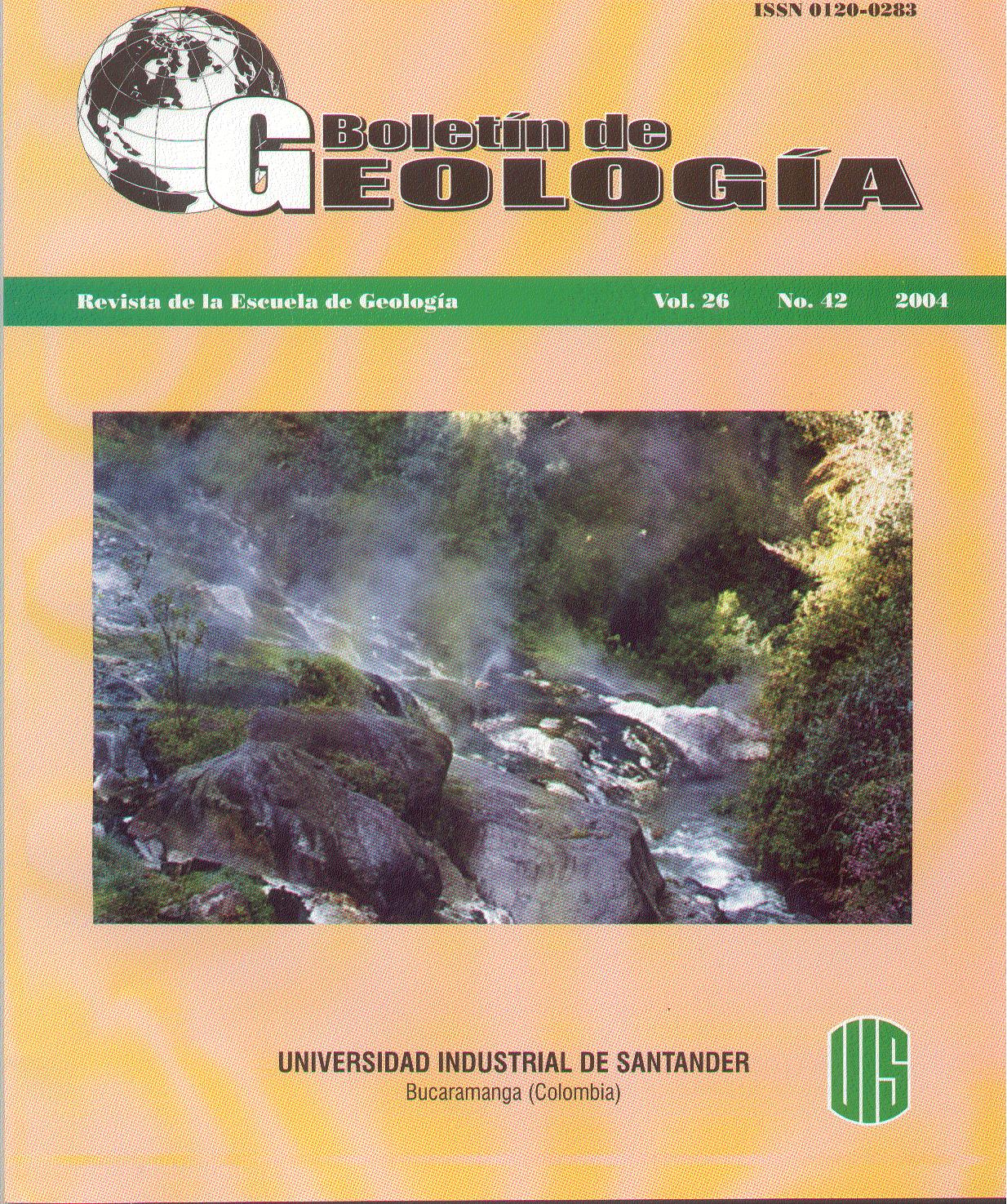Mineralogía y fisicoquímica de las fuentes termales del departamento de Nariño
Published 2004-03-25
Keywords
- Thermal springs,
- hydrothermal alteration,
- volcanology
How to Cite
Abstract
The volcanoes at Nariño department are active stratovolcanoes located from 5 to 10 Km near towns with population between 30000 and 350000 inhabitants. Thermal springs of these volcanoes are brackish, with temperatures ranging from 22 to 62°C. Two types of altered rocks were identified: acid alteration on the summit of studied volcanoes and intermediate to alkaline alteration on the low part. All thermal waters of theses volcanoes are inmature and have not established an equilibrium state in the water-rock interphase. There are twenty-one thermal springs in the department of Nariño, three of which are classified as bicarbonates; five are chlorides and another have high contents of sulphates in its waters.
Downloads
References
APHA. (1991). Supplement to the 17th edition of Standardmethods for the examination of water and waste water.American Public Health Association, American WaterWorks Association, Water Pollution Control Federation,Washington, USA. 150 p
ASTM. (1998). Annual Book of ASTM Standards.Sections 11.01, 11.02, Water. American Society forTesting Materials, Philadelphia, USA
Compilación de Estudios Geológicos Oficiales enColombia. (1995). INGEOMINAS. Tomo XXI, EdinsonLozano-Editor. Santafé de Bogotá D.C., 455p
Fischer, T.P. (1994). The Geochemistry of fumarole gasesat Galeras volcano, Colombia. Master’s Thesis, ArizonaState University, Tempe, USA. 103 p.
García, F. (1992). Cartilla preliminar para muestreo deaguas termales en zonas de influencia volcánica.INGEOMINAS. Santafé de Bogotá D.C., 32 p
Garzón, G., García, F., y Chica, A.C. (1996).Clasificación de las Aguas Termales del Volcán Galeras.INGEOMINAS. San Juan de Pasto, 61 p.
Giggenbach, W.F. (1988). Geothermal solute equilibria.Derivation of Na-K-Mg-Ca geoindicators. Geochim.Cosmochim. Acta, Vol. 52, pp. 2749-2765
Giggenbach, W.F. and Goguel, R.L. (1989). Collectionand analyses of geothermal and volcanic water and gasdischarges. Dep. Sci. Ind. Report CD-2401, Pentone,New Zealand, Chem. Div. DSIR Rep., pp. 1-53
Giggenbach, W.F., García, P.N., Londoño, C.A.,Rodríguez, V.L., Rojas, G.N. and Calvache, M.L.. (1990).The chemistry of fumarolic vapor and thermal-springdischarges from the Nevado del Ruiz volcanic-magmatic-hydrothermal system, Colombia. J. Volcanol. Geotherm.Res., Vol. 42, pp. 13-39
López, D.L. (1994). Hidrogeoquímica de sistemashidrotermales. Curso impartido en el Instituto Costarricensede Electricidad, San José, Costa Rica, 296 p
Menyáilov, I.A. (1975). Prediction of eruptions usingchanges in composition of volcanic gases. Bull.Volcanol., Vol. 39, pp. 112-125
Sturchio, N.S., Williams, S.N., García, P.N., andLondoño, C.A. (1988). The hydrothermal system ofNevado del Ruiz volcano, Colombia. Bull. Volcanol., Vol.50, pp. 399-412
